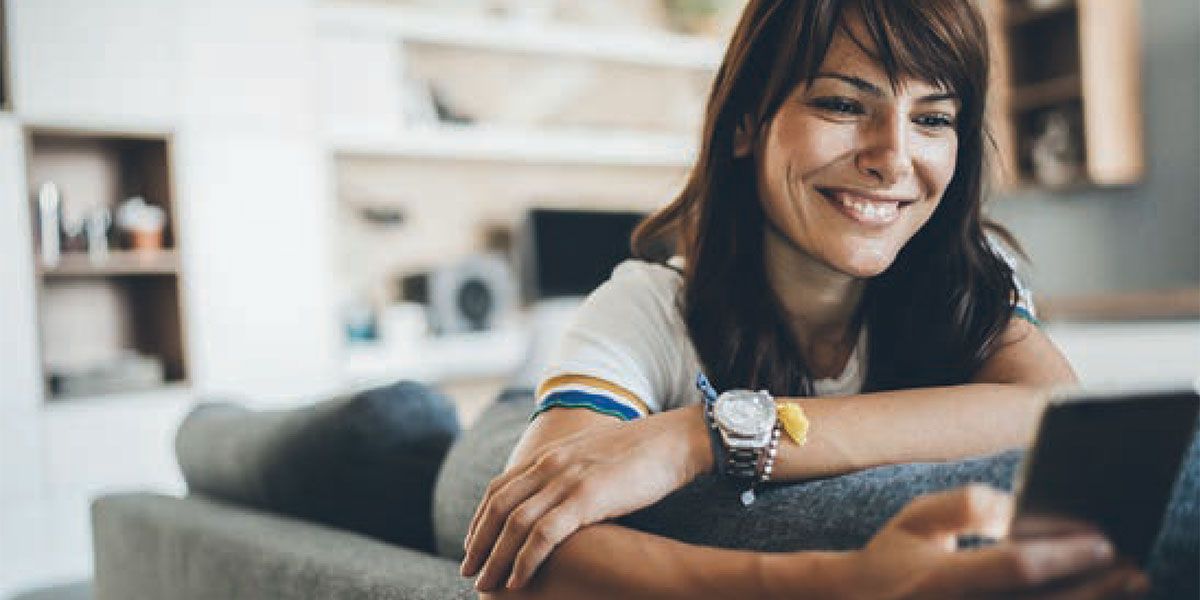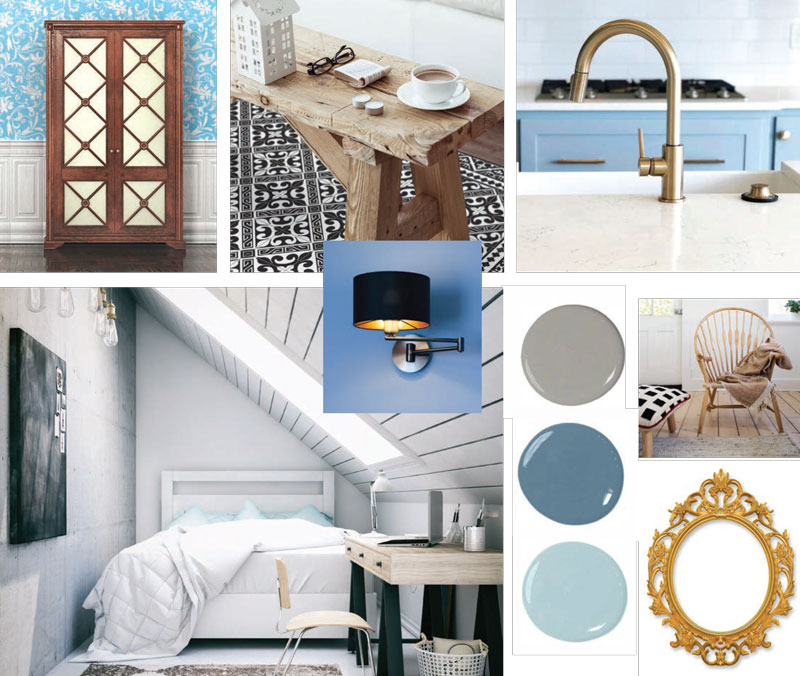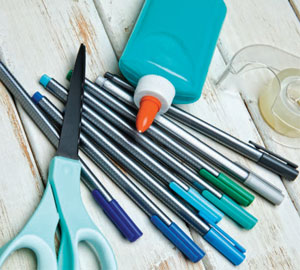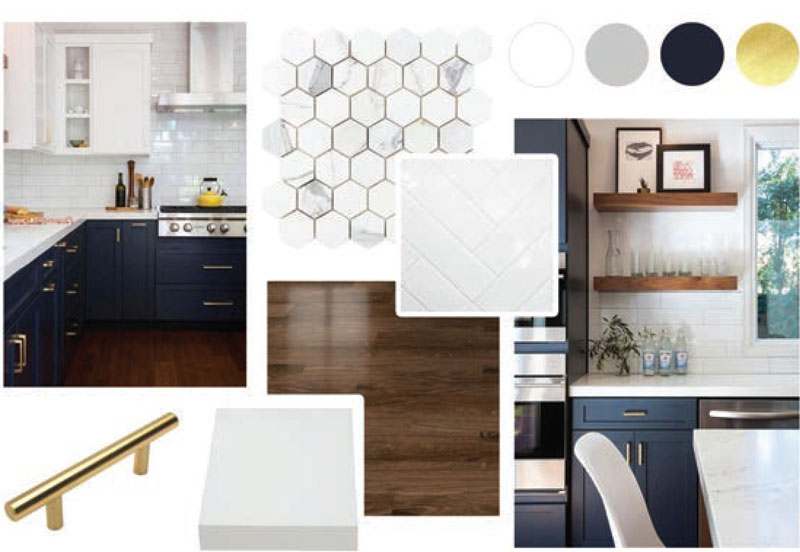In a Mood | Create a Mood Board to Inspire Your Design Projects

When filmmakers begin to conceptualize how all the visual elements of a movie will come together, they create a storyboard: a concrete representation of all the scenes, angles and settings they plan to shoot. The storyboard is fluid: Pieces can come in, go out, and move from one spot to another as filmmakers work through exactly how their plan will come together. Sometimes, seeing something played out on the storyboard helps filmmakers realize it won’t work, so that element is erased.
Interior designers use a similar strategy for conceptualizing a space: a mood board. Like storyboarding, creating a mood board helps designers put all the elements of a space together, but you don’t need to have a design background to understand and use one. Mood boards are a great way for anyone to preview how all the colors, patterns and finishes in a space work together. With so many decisions to be made, using a mood board can be a great place to start and gather your thoughts.
Historically, mood boards were crafted from magazine clippings, fabric and paint samples, or any other snippet of inspiration artfully affixed to cork or posterboard, . Today, there are multiple digital options, such as Pinterest, Canva and Adobe to help build a digital mood board or locate and print images for a physical board more easily. No matter which medium you choose to create a mood board for your next design project, there are a few helpful tips and tricks to keep in mind. First, experts say that a mood board will be most beneficial if you think about the board as your actual space. Centrally placed items in the room, such as the dining room table or the bed, should be centrally placed in the mood board. Items should be printed to scale; larger items, like furniture, should be bigger than smaller items, like throw pillows. Light fixtures should be placed at the top. Big-impact elements, such as paint color, wallpaper, or a heavily-used fabric, should pop up a few times. Some mood board creators actually make the paint color the background of their mood board so they can see how it looks with every other part of the space. With these few pro tips in mind, you can select whichever version of a mood board works for you with confidence.
Physical mood boards are considered old school, but are still a favorite of tactile learners and craft lovers. The act of finding, printing, clipping, and physically arranging pieces of the space is still a favorite for many people. All you really need is a good collection of design magazines, sharp scissors, tape (glue tends to make ink from the images run), and something on which to arrange these pieces. You can also incorporate fabric and trim, paint or wallpaper. The physical method allows you to experience the texture of these items as well—something digital methods can’t do. Putting together a physical mood board creates something you can see and feel, helping you visualize your completed project. Several designers use what they call the “file method:” they create mood boards for themselves using the inside of a file folder. This method keeps the board small, portable and easily accessible to show to their clients, contractors and vendors whenever they need it. For the amateur, the file folder method is still small and portable, but also allows for easy storage.
Several designers use what they call the “file method:” they create mood boards for themselves using the inside of a file folder. This method keeps the board small, portable and easily accessible to show to their clients, contractors and vendors whenever they need it. For the amateur, the file folder method is still small and portable, but also allows for easy storage.
Nonetheless, most designers advocate for digital mediums for modern mood boards. Boards created with free tools like Pinterest and Canva are easily created, shared and altered throughout the design process. Pinterest (which so many of us are familiar with) offers a free and intuitive way to create mood boards with very few limitations on content. With both a desktop website and a mobile app, Pinterest has the advantage of links attached to most of the “pins” on the site, making any discovery easier to track down for purchase. Though Pinterest has limited options for arrangement, it’s still a useful tool because it helps organize your thoughts and preview how elements of the space can work together. You can also rearrange the order of your pins to move certain images closer to others. Canva is another free option (although there is a subscription-only pro version available) with their Photo Collage creator. Unlike Pinterest, you’ll likely have to find your own images and there are no links attached unless you’ve taken note of where you found the images, but there are virtually unlimited options for arrangement, backgrounds, and even adding text to create captions or theme words. You can use one of their existing templates or create your own. Additionally, you can download and save your finished mood board as its own image, making it easily shareable.
Whether you choose to make a physical mood board or use a digital tool, the most important consideration is to have fun with it. A mood board is a valuable tool for planning and executing a project. It’s easy to take shopping with you, to keep yourself organized, and even to collaborate with a designer or supplier. But even if the room you’re designing is more pipedream than project, creating mood boards is a low-risk, low-cost, useful and creative activity for everyone. ✦
Colors, conceptualizing, desktop website, digital tool, file method, finishes, mobile app, Mood Board, paint samples, patterns, physical mood board, storyboard









